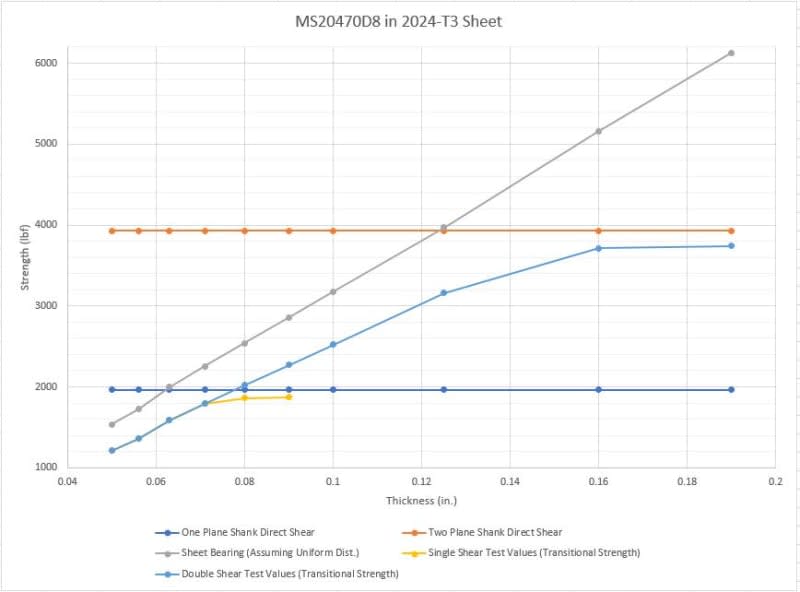Abbyyyy
Aerospace
- May 17, 2023
- 4
Greetings, everyone!
This is my first time starting a thread, and I'm hoping to receive your help.![[smile] [smile] [smile]](/data/assets/smilies/smile.gif)
I've encountered a problem: commonly used solid rivets, like NAS1097/NASM20426, etc., all have rivets made from 2117 aluminum alloy, otherwise known as AD rivets. According to the technical specification NASM5674, the shear strength of AD rivets is required to be 26KSI. However, after researching and testing actual products, the real shear strength is essentially between 33KSI and 34KSI, exceeding the specification requirement by 23% to 26%. Does anyone know how the shear strength requirement for solid rivets in NASM5674 is established? Why is the specified value in NASM5674 so much lower than the actual ones? Thank you!
This is my first time starting a thread, and I'm hoping to receive your help.
![[smile] [smile] [smile]](/data/assets/smilies/smile.gif)
I've encountered a problem: commonly used solid rivets, like NAS1097/NASM20426, etc., all have rivets made from 2117 aluminum alloy, otherwise known as AD rivets. According to the technical specification NASM5674, the shear strength of AD rivets is required to be 26KSI. However, after researching and testing actual products, the real shear strength is essentially between 33KSI and 34KSI, exceeding the specification requirement by 23% to 26%. Does anyone know how the shear strength requirement for solid rivets in NASM5674 is established? Why is the specified value in NASM5674 so much lower than the actual ones? Thank you!

![[thumbsup2] [thumbsup2] [thumbsup2]](/data/assets/smilies/thumbsup2.gif)
![[bigsmile] [bigsmile] [bigsmile]](/data/assets/smilies/bigsmile.gif)
